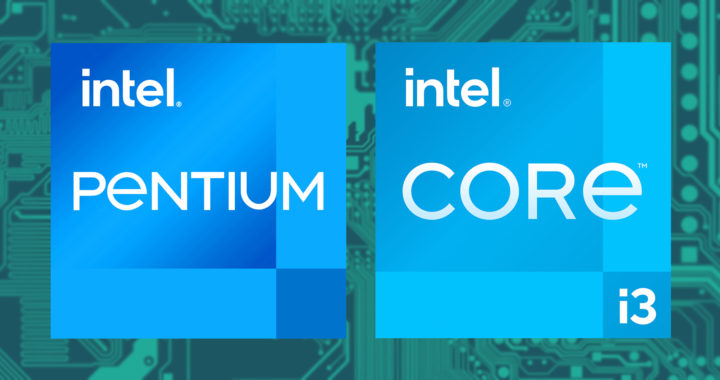Both Pentium and Core i3 are entry-level brands of processors from Intel. Manufacturers of desktop and laptop computers have used either of these two processors in some of their basic devices marketed toward average PC users.
There are some similarities between these two brands in terms of overall architecture and capabilities. However, considering their general positioning, there are also notable differences or more specifically, product differentiation between the two.
Key Differences Between Pentium and Core i3
• Product Positioning: Intel Pentium is positioned toward a specific market segment or niche market characterized by budget-conscious consumers and entry-level PC users. The Core i3 is also an entry-level processor but it is marketed toward a segment of the greater mainstream PC market.
• Number of Cores: Both brands have a multi-core design. The number of cores in Pentium-branded processors ranges from 2 to 5 while the cores in Core i3-branded processors number from 2 to 10 depending on the model.
• Clock Speeds: The most latest generations of these brands of processors also have 3.40 GHz to 4.40 GHz clock speeds. These clock speeds differ across different models and their respective specified and positioned use cases.
• Integrated Graphics: Processors under these brands also have integrated graphics processors. Pentium Gold and performance-grade Core i3 processors have the latest generation of Intel UHD Graphics while Pentium Silver and power-efficient Core i3 variations use older Intel UHD Graphics.
• Cache Size: Caching is another difference. The most recent generations of Core i3 have 10MB to 12MB Intel Smart Cache while the latest generations of Gold sub-brands 6MB to 8MB Intel Smart Cache. The Silver sub-brands have a 4MB L3 cache.
• Other Specifications: Another difference between a Pentium and a Core i3 is that the latter, especially higher-end models, has additional hardware specifications and features including advanced or better hyper-threading and Turbo Boost.
Pricing or Cost: Remember that both are positioned as entry-level and budget-friendly processors. However, despite this similarity, another difference between the two is that Pentium is cheaper at around USD 90.00 for the highest-tier variation while the highest-tier variation of the Core i3 retails for 145.00 to 150.00 USD.
Considering the aforementioned key differences between Pentium and Core i3 processors, it is also important to note that Pentium-branded processors are generally suited for average-level computing such as general office productivity, web browsing, and video playback.
Core i3-branded processors are targeted toward the mainstream market. They are ideal for budge-considerate but performance-seeking consumers. They are fundamentally more powerful and capable than their Pentium-branded counterparts because they are better-rounded.
Note that Core i3 processors might also be more expensive but they can provide a better value for money due to their superior technical specifications and features that provide them with a wider utility and a good deal of future-proofing.





